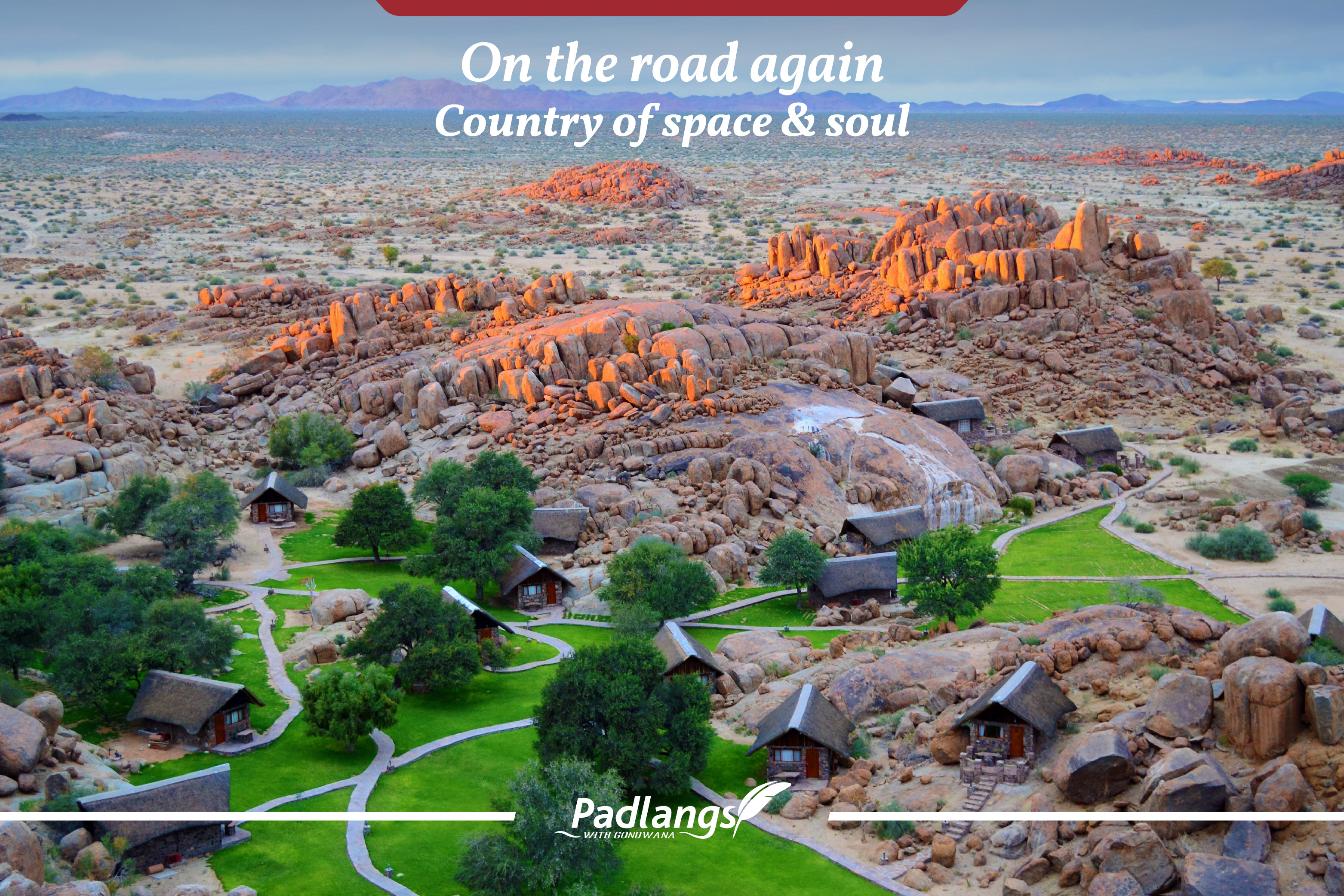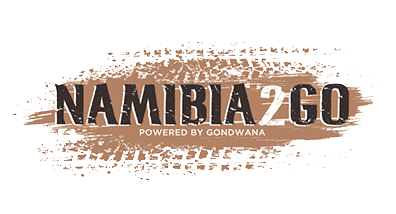It’s all about ancient treasures of the earth in this north-western corner of Namibia – rock formations, fossilised tree trunks, gemstones, mountains and rock art. Rock ‘n rolling just doesn’t get better than this.
From the lush and lovely Damara Mopane Lodge I headed west into the tawny colours of the landscape. My first stop was at the Petrified Forest where millions-of-years-old fossilised chunks of wood lie strewn across the soil surrounded by stunted mopane trees, commiphora bushes and windswept welwitschia plants. “The old fossils surrounded by the living fossils,” my guide John Jakurama told me, referring to the welwitschia’s well-earned name and its ancient roots. He explained how millennia ago when the waters from the ice age melted, a huge flood washed ancient conifer trees from Central Africa to this spot, where buried deep in the soil they fossilised over time.
.jpg?width=2083&height=2083&name=04_OntheroadagainRocknrollingthroughNamibia-02%20(1).jpg)
It was food for thought, which I chewed on as I passed small roadside stalls selling rough stones, seedpod mobiles, desert roses and makalani keyrings etched with images of wildlife. When I stopped at the turnoff to Twyfelfontein to marvel at the innovation of an elephant and lion sculpture, which moved when a wire was tugged, I heard that the desert elephants were in the nearby Riemvasmaak settlement, De Riet. “Would you like to be my guide?” I asked Alex, the wire-jiggler. We quickly bartered, his time for a giant bag of maizemeal. He hopped aboard delighted and we turned back to the road taking a sandy track that snaked through the dunes, picking up a young boy on his way home. The adventure had begun and I negotiated the patches of soft sand as the pair directed me from one sandy track to another. We were all in fits of laughter as I clutched the steering wheel, squinted my eyes and kept exclaiming that we probably should have taken the ‘gryspad’ (gravel road). The fun was only just beginning as we entered De Riet, where a group of five elephants were moving slowly from the reservoir down to the river, snacking on camelthorn trees along the way. We watched the kings of the Namib who use the dry ephemeral river systems as their highways through the desert. When the last elephant moved off, so did we to find out more about Riemvasmaak history (a story for another time) and to careen through the sandy riverbed track back to the main drag.
.jpg?width=2083&height=2083&name=04_OntheroadagainRocknrollingthroughNamibia-03%20(1).jpg)
Dropping off Alex, I continued to the Twyfelfontein rock engravings, The area was once known by its Damara name ‘/Uis-//aes’ - ‘Place among packed stones’. The name ‘Twyfelfontein’ stems from the time of farmer David Levin, who persevered with farming in the arid environment always wondering how much water the small spring could yield – hence his nickname ‘David Twyfelfontein’ – ‘David Doubtful Spring’. I made it in the nick of time to join the last group of the day. The guide ‘Super Success’ was still in good spirits, explaining that he had such a long Otjiherero name that when he was finally able to memorise and write it in Grade 1 his teacher said “Well done! You will be super successful in life”. And the name ‘Super Success’ stuck.
Over the years, I had come to believe that the thousands-of-year-old rock engravings had been chiselled into the sandstone by the San (aka Bushman) shaman or medicine man, who beseeched the gods for healing, food and protection for his people, and that the Twyfelfontein surrounds was a cathedral of prayer. Super Success had a different interpretation of the rock art. He saw the 2000-6000-year-old engravings as lessons for youngsters, messages to other hunter-gatherer groups, maps to waterholes and a few, like the lion-man which has a human hand on the tip of its tail, as shaman communication with the ancestors. As one of the main attractions in Namibia, with hundreds of people visiting the engravings every day, Twyfelfontein is a Namibian bestseller, one of the country’s top and most popular stories.
My overnight destination was the nearby Aba-Huab campsite where I watched the setting sun dip into the dry riverbed as I put up my tent in the wind, cooked supper and showered under the stars, with piping hot water heated by a donkey boiler. The wind dropped and I closed my eyes to the faint lingering aroma of the smelly or stink shepherd’s tree (Boscia foetida), which was in flower attracting its chief pollinators, flies. The sound of jackals chorusing sang me to sleep and some of the flies hitched a ride with me the next day.
.jpg?width=2083&height=2083&name=04_OntheroadagainRocknrollingthroughNamibia-04%20(1).jpg)
(Join me next week as we continue rock ‘n rolling through Namibia)









.png)

SUBMIT YOUR COMMENT